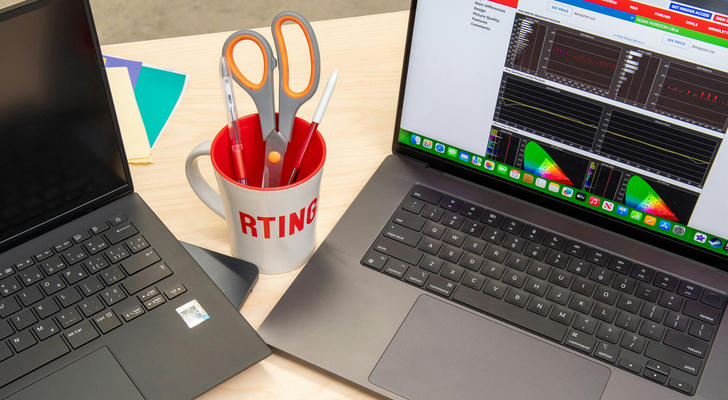How to Choose the Ideal Remote Work Setup for Your Way of Life

In this age of digital advancement, the classic office setting is being replaced by the adaptability of working from anywhere. An increasing number of people are seizing the chance to work from the comfort of their own homes or any spot they prefer, in search of improved work-life equilibrium and greater personal liberty. However, making the switch to remote work necessitates thoughtful preparation to guarantee efficiency and happiness.
This guide will lead you through the steps to pick the perfect remote work setup that suits your lifestyle aspirations.

Step 1: Clarify Your Lifestyle Goals
Before you arrange your remote work area, it's essential to grasp what you hope to gain from this new method of employment. Reflect on these points:
What is your vision for the perfect workday?
Imagine the equilibrium between your job and personal time. Are you aiming for more quality time with family, the liberty to travel, or just a quieter setting to concentrate?
What are your efficiency requirements?
Identify the circumstances that enable you to work most effectively. Do you need total silence, a specific time to work, or particular tools to stay productive?
How will you distinguish between work and personal life?
Set boundaries that will help you keep a healthy work-life balance. Think about where and how you will work to ensure a clear divide between your professional and personal spaces.
Step 2: Evaluate Your Job Needs
With a clear understanding of your lifestyle goals, consider what your job expects in terms of gear and environment.
Technology and Tools
Compile a list of the key technology and tools necessary for your job tasks. This might include a sturdy laptop, internet access, software subscriptions, and any specialized gear you might need.
Communication Essentials
Assess how you'll keep in touch with your colleagues and clients. Decide if you need a separate phone line, video conferencing tools, or messaging apps to stay in contact.
Security Precautions
Make sure your remote work setup adheres to your company's security guidelines. This could mean using a secure VPN, encrypted communication methods, and keeping your devices up to date with the latest security updates.
Step 3: Create Your Workspace
Your workspace is pivotal to your remote work setup. Here's what to consider when setting up your area:
Comfort and Ergonomics
Purchase an ergonomic chair and desk arrangement that encourages good posture and lessens the chance of strain or injury. Ensure your workspace is pleasant and well-lit.
Reduce Interruptions
Select a quiet spot in your home, away from noise and distractions. If feasible, reserve a specific room or area just for work to help you stay on task.
Personal Touches
Decorate your workspace with items that bring you joy and motivation. This could be plants, pictures, or keepsakes that lift your spirits.
Transitioning from theory to practice, let’s look at how two individuals have successfully tailored their remote work environments to enhance their productivity and well-being.
Case Study 1: Tom’s Transformation
Tom, a software developer, provides a compelling example of how strategic changes can lead to significant improvements in remote work productivity. A recent analysis of his work logs reveals that his productivity has increased by 25%, and his work satisfaction has risen by 30%. Tom’s setup not only enhances his professional output but also helps maintain a healthy work-life balance.
Case Study 2: Sarah’s Strategy
In a similar vein, Sarah, a marketing specialist, has optimized her remote work environment to achieve remarkable results. Her approach illustrates the importance of time management and virtual collaboration in remote work settings.
Sarah has reduced her daily commute from two hours to zero, freeing up an additional 10 hours a week for her work. This change has led to a 15% increase in project completion rates. Additionally, team engagement surveys indicate a 20% improvement in team cohesion, which Sarah attributes to consistent virtual interaction and professional development sessions.
These case studies highlight the individualized nature of remote work setups and the potential for significant gains when the right strategies are employed.
Step 4: Set Routines and Limits
Create a Routine
Develop a daily routine that includes work hours, breaks, and personal time. Stick to this routine to maintain consistency.
Set Clear Boundaries
Let family members or roommates know about your work schedule and the importance of keeping disturbances to a minimum during these times.

Step 5: Trial and Modify
Once your remote work area is set up, give it a try for a week or two. Take note of any problems or areas that could be improved and make the necessary changes.

Step 6: Maintain Connection and Involvement
Remote work can sometimes result in feelings of loneliness. Keep in touch with your team through regular video chats and virtual gatherings. Participate in professional growth opportunities and social activities to preserve a sense of belonging.
A Route to Remote Work Triumph
Finding the perfect remote work setup that aligns with your way of life is crucial for excelling in the new work landscape. By defining your goals, assessing your job needs, crafting a functional workspace, and setting routines, you can create a remote work environment that boosts your productivity and contentment.
The inclusion of data-driven insights from case studies like Tom’s and Sarah’s underscores the tangible benefits of a well-planned remote work setup. These numbers not only illustrate the potential for increased efficiency but also highlight the positive impact on employee well-being and team dynamics. Remember that remote work is an ongoing process, and it may involve some experimentation to discover what’s best for you. With the right setup and attitude, you can reap the rewards of remote work while fulfilling your professional objectives. Embrace the flexibility and take the necessary steps to make your remote work life a triumph.
